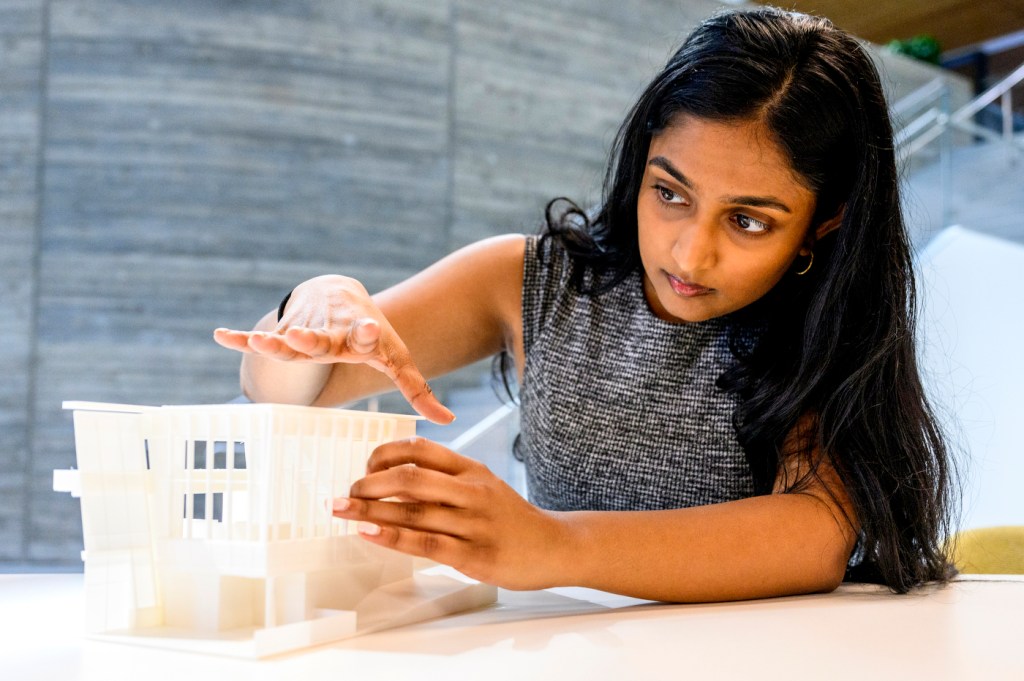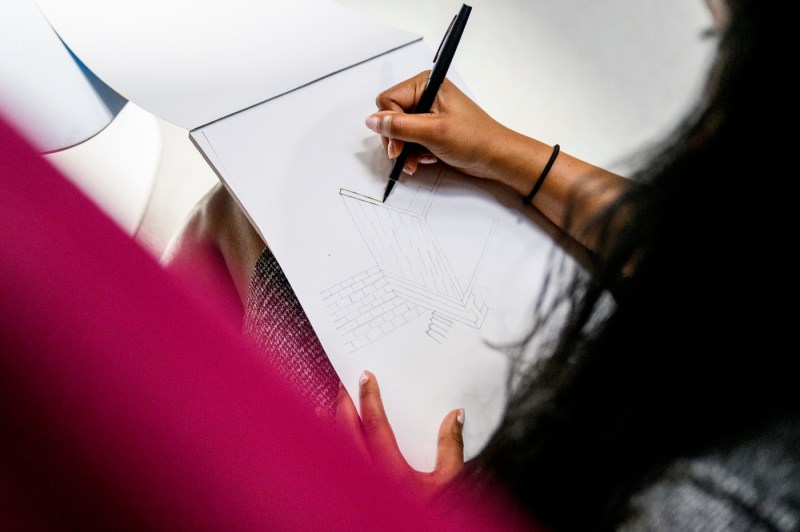Northeastern student honored as one of top architecture graduates in North America
“It’s really nice to be able to connect the real world to what I’m doing at school,” says Ritika Iyer, who was named one of the top 100 architecture and interior design graduates in North America by Metropolis Magazine.

Many architecture students graduate without ever having seen designs and work outside their own campus. This was not the case for Ritika Iyer.
Iyer graduated from Northeastern University with her bachelor’s degree in architecture in May with a year of co-ops and several internships under her belt. She’ll receive her master’s in architecture in May 2025 with experience working on multifamily housing projects throughout Boston.
Metropolis Magazine acknowledged this when they named Iyer one of the top 100 architecture and interior design graduates in North America, making her the first undergraduate student from Northeastern to receive this honor.

Iyer attributes her success to her professional experience from co-op.
“Most architecture students do not graduate with industry experience,” she says. “It’s really nice to be able to connect the real world to what I’m doing at school. I’ve been able to explore different neighborhoods, do projects in different places, and learn about how the city really came to be through Northeastern … and the co-op program.”
It was Northeastern’s location in Boston that drew in Iyer from her hometown in the Seattle area. In addition to the chance to do a year of co-ops, Iyer wanted to work in a city whose architecture is varied and storied due to its deep history.
“I chose Northeastern because of its prime location within a city that is growing and has a lot of different building typologies,” Iyer says. “It was very diverse in terms of old buildings and new buildings. It just seemed like the program used the city … as a laboratory for their education.”



Iyer took full advantage of this. She did two co-ops for two different architecture firms with a summer internship worked in between those two jobs.
Her first co-op was at Solomon Cordwell Buenz, a Chicago-based firm that recently expanded to Boston. Iyer helped the company secure its presence on the East Coast, working on accessibility code compliance in their multi-family projects. Here, she helped measure digital spaces to ensure the units would be accessible for wheelchair users.
For her second co-op, Iyer was at RODE Architects in Boston. There, she worked hand in hand with Boston’s housing office on an affordable housing project that needed to adhere to city standards.
In between these co-ops, Iyer did an internship at Stantec, one of Boston’s largest architectural firms, where Iyer tried her hand at standardization work, helping standardize the bathrooms for a 44-story multifamily project.
“Housing tends to be versatile and it’s a necessity,” Iyer said. “It’s something that I’m pretty passionate about and I’m fortunate that I’ve gotten to work on that for the last couple of years.”
Iyer incorporated this work into the portfolio she submitted to Metropolis Magazine, along with recommendations from one of her co-op supervisors and her professor.
“My portfolio has really become a collection of work that describes me,” she said. “I think it turned out to be a pretty cohesive set of pages where any page that you open, you can tell whose portfolio it is and what story it’s telling. That’s definitely something I’m proud of. I think I really found a design style that suits me, something I’m excited about doing and that’s pretty colorful.”
As Iyer looks forward to her career, she hopes to continue working on building housing in cities through innovative methods such as converting vacant structures.
“The high-rise method of construction is really nice and it’s so exciting to think about my design having a permanent place in a city skyline,” Iyer said. “But a lot of sustainability trends show that existing buildings are probably the best place to start. I hope that there is a way to combine the two.”






